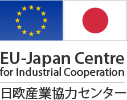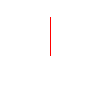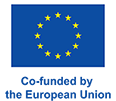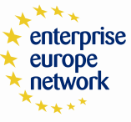
Offshore wind turbines | Vestas Wind Systems X Mitsubishi Heavy Industries

Vestas Wind Systems, a Danish leader in wind turbines manufacturing, and Mitsubishi Heavy Industries, one of the world’s largest industrial firms, joined forces in 2014 to establish MHI Vestas, a joint venture aiming at becoming a leading player in the offshore wind industry. MHI Vestas now hires more than 3000 people, has offshore turbines in operation in several European countries, and registered its first orders in Asia. Late 2020, the partnership evolved with new perspectives in wind energy and green hydrogen.
The partners
Vestas Wind Systems, a Danish leader in wind turbines manufacturing
With roots dating back to 1898, Vestas was officially founded in Denmark in 1945, initially manufacturing household appliances, then moving to agricultural equipment and cranes in the 1960s. In 1979, the company entered the wind turbine industry, and from 1989 focused solely on this activity. In 2003, Vestas merged with another Danish company to become the largest turbine manufacturer in the world. Today, the 25000 employees of Vestas design, manufacture, install and service wind turbines around the world. The company has installed more than 122 GW of wind turbines in 82 countries. Vestas has sales offices on all continents, as well as factories in Europe, Asia and America.

In Japan, Vestas provided turbines for pioneer projects, including a demonstrator supported by Japanese public agency NEDO in Iwate prefecture in 1999, the first full-scale wind power plant in the coastal area of Tokyo in 2003, a citizen-funded wind farm in Hokkaido in 2005, and a 46 MW wind farm in Fukushima in 2010. In 2008, Vestas formally established Vestas Wind Energy Japan to support further projects in the country and develop partnerships with Japanese companies.
Mitsubishi Heavy Industries, one of the world's largest industrial groups
Mitsubishi Heavy Industries (MHI), headquartered in Tokyo, is one of the world’s leading industrial firms, with 80000 employees. Created more than 130 years ago, MHI owns a business portfolio covering land, sea, sky and space. MHI delivers solutions across a wide range of industries from commercial aviation and transportation to power plants and gas turbines, and from machinery and infrastructure to integrated defense and space systems.
In the renewable energy sector, MHI produces wind turbines, geothermal power plants, hydropower turbines, solar photovoltaic modules and heat pumps. The company delivered the first wind turbine equipment for commercial use in Japan in 1982. MHI also develops solutions for fuel cells, batteries and distributed power systems.
Mitsubishi Heavy Industries maintains a comprehensive presence across Europe, with 11000 employees, more than 100 offices and factories, and relationships with more than 600 European suppliers. MHI activities in renewable energy in Europe include the purchase in 2019 of Dutch company Eneco, operating 2 GW of wind capacity and 300 MW of solar.
The partnership: MHI Vestas, a joint venture to lead the offshore wind industry

Established in 2014 with 380 employees transferred from Vestas and MHI, headquartered in Denmark, and initially owned equally by the parent companies, the joint venture MHI Vestas Offshore Wind was founded “to be a leading player in the offshore industry by co-developing offshore wind as a financially viable and sustainable energy source to benefit future generations.”
Combining the experience and skills of both companies in wind power, MHI Vestas produces offshore turbines, offers operation and maintenance services, and manages projects for offshore wind power plant installation.
Milestones in MHI Vestas' first six years of existence include the installation in Denmark in 2016 of two of the world’s most powerful wind turbines, the signature in 2018 of a series of memoranda of understanding with local manufacturers in Taiwan, the launch of the world’s first 10 MW wind turbine in 2018 and the opening of its US headquarters in Boston in 2019.
MHI Vestas now hires more than 3000 employees in offices across Europe, Asia Pacific and the United States. Its offshore wind turbines are in operation in Portugal, Denmark, Sweden, the UK, Belgium and the Netherlands. The company has also registered orders for new projects in Taiwan, Japan, Germany, France and Scotland, for installation in the next 2 to 4 years.
At the end of 2020, Vestas and MHI announced the signature of a new agreement to expand their partnership in sustainable energy. Under the new deal, Vestas acquires MHI’s shares in the MHI Vestas joint venture, while MHI acquires shares in Vestas and joins the board of directors of Vestas. The agreement also opens the way for collaboration between the Japanese and the Danish firms for green hydrogen and for the establishment of a new joint venture for wind energy (onshore and offshore) in Japan.
Offshore wind: a promising ground for EU-Japan partnerships
Both Europe and Japan have set ambitious targets for offshore wind energy by 2040, as part of their pathways towards carbon neutrality in 2050: the EU aims at nearly 130 gigawatts of installed capacity - the largest capacity in the world -, while Japan announced in December 2020 its ambition to be the third largest offshore wind energy producer with 45 gigawatts.
This shared vision on the importance of offshore wind development opens opportunities for further partnerships between companies of Europe and Japan. Besides the cooperation between MHI and Vestas previously described, other examples already include the demonstrator of floating offshore wind designed by Ideol (France) and financed by Japanese public agency NEDO in Kitakyushu (western Japan), the opening in 2019 of the Japanese unit of the world’s largest offshore wind company, Orsted (Denmark), and the acquisition in September 2020 of Japanese wind power producer Acacia Renewables by Spanish utility Iberdrola.
In this pilot, the hydrogen is supplied by a gas company and is not necessarily produced from clean sources. In order to achieve true decarbonization of hydrogen-fueled steel-making, another challenge is the availability of renewable, CO2-free hydrogen in large volumes, at an affordable cost. As of today, most of the hydrogen used in the industry is produced from methane, thus emitting CO2 at the source. Zero-emission steel will require zero-emission hydrogen, that can be produced by electrolysis from water using fossil-free energy. One of the most advanced projects in this regard is H2Future, also located on an industrial site of voestalpine in Austria. Funded by the EU, H2Future started in 2017 and uses a technology developed by Siemens to produce hydrogen from renewable electricity.
Besides voestalpine, MHI and other Japanese companies such as Nippon Steel, an increasing number European companies are pursuing the hydrogen-fueled steelmaking process using various technologies, including SMS and Thyssenkrupp from Germany and Danieli from Italy.
More information
- Report: wind energy in Japan (EU-Japan Centre for Industrial Cooperation, 2016)
- Vestas Wind Systems | Mitsubishi Heavy Industries | MHI Vestas Offshore Wind
- More case studies of European-Japanese industrial partnerships for decarbonization
- SPIPA Japan: a one-year cycle of events supporting EU-Japan climate cooperation








